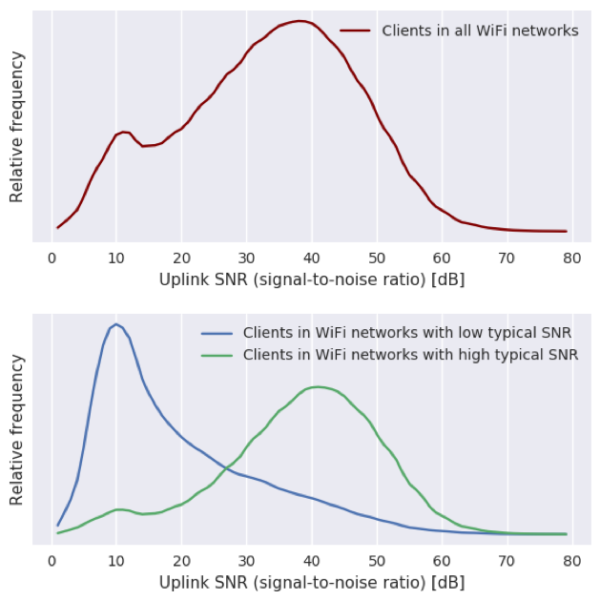The Latest Aruba Networks News
Product and Solution Information, Press Releases, Announcements
| Cutting Through the AI Mist: How AIOps Leverages Network Environment Factors to Deliver Reliable Automation | |
| Posted: Tue Feb 11, 2020 08:14:50 AM | |
|
By Bernd Bandemer, Director, Data Science at Aruba In a recent blog post, we discussed the essential AIOps building blocks of an AI-operated self-driving network. Environmental factors of a network play a key role: they capture characteristics of the network that are not controllable. For the purpose of the AI and the actions it can take, they are externally given parameters. The environmental factors define the extent of the playing field within which the AI is allowed to optimize. In this blog post, we’ll make the concept concrete by looking at specific environmental factors, what they mean and how they are measured. The examples are drawn from automatic performance optimization for Wi-Fi networks, a core feature of Aruba Central AI Insights. There are four distinct types of environmental factors that capture the physical environment, the network layout, the user mobility behavior, and the traffic characteristics. Factors representing the physical environment relate to the architecture, floorplan, and materials of a building, seen through the lens of the Wi-Fi infrastructure. Firstly, the building size, measured in terms of square footage, is clearly an important factor. If it is known on which floor of a building each Wi-Fi access point is installed, we can measure the effect of the ceilings on the Wi-Fi signal (through-ceiling signal loss). The combined effect of all building materials on signal propagation can be represented by the path loss exponent, which is the average rate at which the Wi-Fi signal strength decays. Network layout factors are related to the way the network infrastructure is deployed in a space. This includes Wi-Fi access point density and the Wi-Fi hardware capabilities of the access points. To capture the end user’s perspective, we measure the strength of the client device signals when received by the access points, and aggregate these raw measurements over time, space, and clients to compute the typical uplink signal-to-noise ratio. Finally, the level of resource competition caused by other Wi-Fi equipment can be captured as the density of unmanaged access points. Factors that represent user behavior include peak client density, since networks need to be designed to handle the highest possible load and typical client dwell time, which quantifies the mobility behavior of the users. The population of client devices can be characterized by the composition of client device types in categories such as laptops, phones, IoT devices, and legacy devices (that use outdated Wi-Fi protocols). Finally, traffic characteristics capture the kind of applications running on the network. This includes typical traffic volume per connected client, as well as the traffic composition across application types. These features help the AI to allocate network resources preferentially to those applications that directly impact the user experience. The combination of all environmental factors defines the playing field for the AIOps that powers the self-driving network. Deployments with the same environmental factors have the same playing field, and form a natural peer group for cross-network benchmarks: if the AI plays on the same field, it should be able to achieve the same performance every time.
Across all networks, client to access point signal-to-noise ratio (uplink SNR) varies widely, and there are two distinct modes (upper diagram). Each network can be characterized by its typical uplink SNR. Grouping similar networks together separates the two modes, allowing like-for-like comparison between networks in the same group (lower diagram). Aruba’s networking hardware is specially engineered to supply raw data for accurate measurement of the environmental factors. Aruba’s cloud architecture supports the design, implementation, and validation of the environmental factors across all our customer networks to ensure they are robustly computed, correspond to wide variety of physical effects (that is, not too correlated with each other), and strongly link to the chosen metric of network performance. Aruba’s AIOps build on the hardware and cloud infrastructure to compute the environmental factors, translate them to meaningful peer groups, and run every single customer network at the optimal operating point. |



